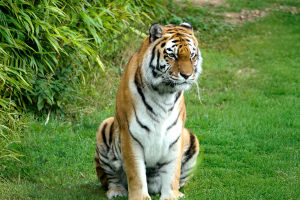Have you ever walked through a dark forest or glanced into the deep sea and wondered if nature had its own nightlights?
Some animals have evolved the incredible ability to produce light on their own, creating glowing displays that seem almost magical.
This natural phenomenon, called bioluminescence, isn't just beautiful—it serves critical purposes in survival, communication, and hunting.
Fireflies: Tiny Lanterns of the Night
Fireflies are probably the most familiar glowing creatures. Their abdomens light up thanks to a chemical reaction involving luciferin and luciferase. Males use this glow to attract females, performing intricate flashing patterns unique to each species. Beyond romance, fireflies can also signal danger to predators. Their light warns that they are toxic and not a tasty snack, demonstrating that bioluminescence is both a tool for connection and protection.
Deep-Sea Fish: Masters of Stealth and Lure
The deep ocean is a world of perpetual darkness, and many fish have evolved glowing features to survive. Anglerfish, for instance, have a bioluminescent lure dangling from their heads. This “fishing rod” attracts unsuspecting prey directly to their mouths. Some species use glowing patterns along their bodies to communicate with potential mates or to confuse predators. In these extreme environments, light becomes a lifeline, guiding feeding and social interactions when eyesight alone isn't enough.
Glow-Worms: Living Threads of Light
Glow-worms, which are actually beetle larvae, create eerie greenish glows along forest floors or cave walls. Female glow-worms emit light to attract males, while some larvae use it to lure insects into sticky traps for food. Their glow is not only functional but mesmerizing, forming a natural spectacle that looks like a scattered carpet of tiny stars. In places where artificial light is scarce, these luminous trails have guided generations of glow-worms through mating and hunting.
Bioluminescent Jellyfish: Dancing Ghosts of the Sea
Some jellyfish species glow in brilliant blues and greens. The light can pulse rhythmically, creating a mesmerizing dance in the water. Bioluminescence in jellyfish often serves as a defense mechanism, startling predators or attracting even larger creatures that might attack the initial threat. This glowing display can also help jellyfish communicate with each other, although scientists are still uncovering the full range of purposes these lights serve in marine ecosystems.
Fungi and Other Glow Creatures
While animals often get the spotlight, some fungi also produce bioluminescent light. Certain mushrooms emit a soft, greenish glow in damp forested areas. In these ecosystems, bioluminescence may attract insects that help spread spores, effectively using light as a tool for reproduction. Interestingly, some tiny crustaceans and plankton also glow, creating sparkling effects in waves that turn beaches and waters into shimmering natural displays.
How Bioluminescence Works
At its core, bioluminescence results from a chemical reaction in the animal's body. A molecule called luciferin reacts with oxygen in the presence of the enzyme luciferase, producing light without heat. This efficiency allows animals to glow without wasting energy or overheating, which is crucial for small creatures or those in extreme environments like the deep sea.
Why It Matters
Watching glowing animals reminds us how creative evolution can be. Each flicker, flash, or pulse is carefully designed to serve a purpose: attracting mates, deterring predators, or luring prey. For humans, these creatures offer not only wonder but lessons in adaptation and survival. Understanding bioluminescence can even inspire technological advances, from sustainable lighting solutions to medical imaging tools that mimic nature's light-producing tricks.
Next time you see a flickering firefly, a glowing jellyfish, or a streak of bioluminescent plankton, pause for a moment. These animals have mastered the art of illumination in ways we're only beginning to understand, proving that sometimes, the darkest places hold the brightest surprises.


